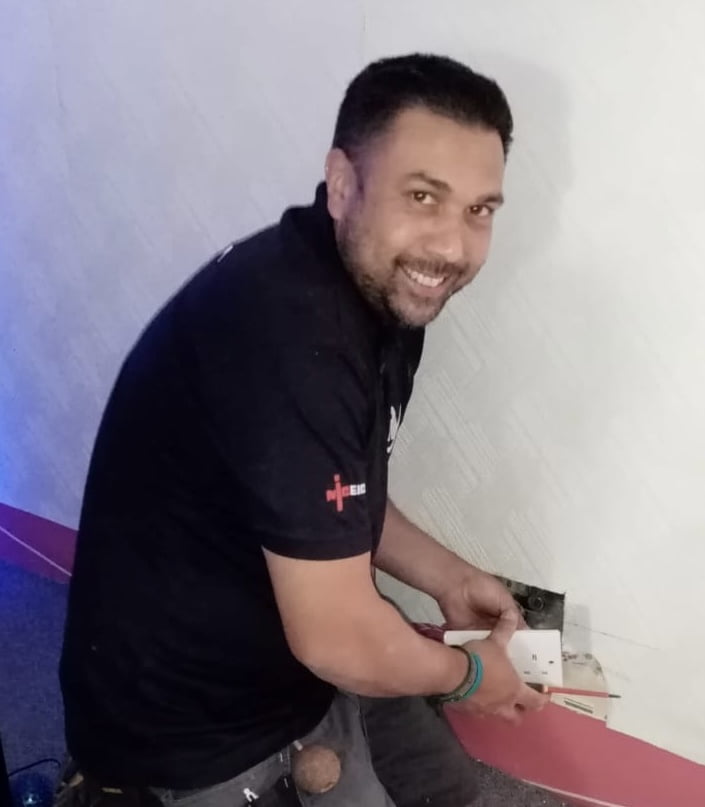P.A.T TESTING
- Comprehensive Safety Checks
- Fire Prevention Measures
- Upgraded Appliance Replacements
- Compliance Certification
- Accident Prevention Solutions
- Equipment Protection Services
Request A Callback
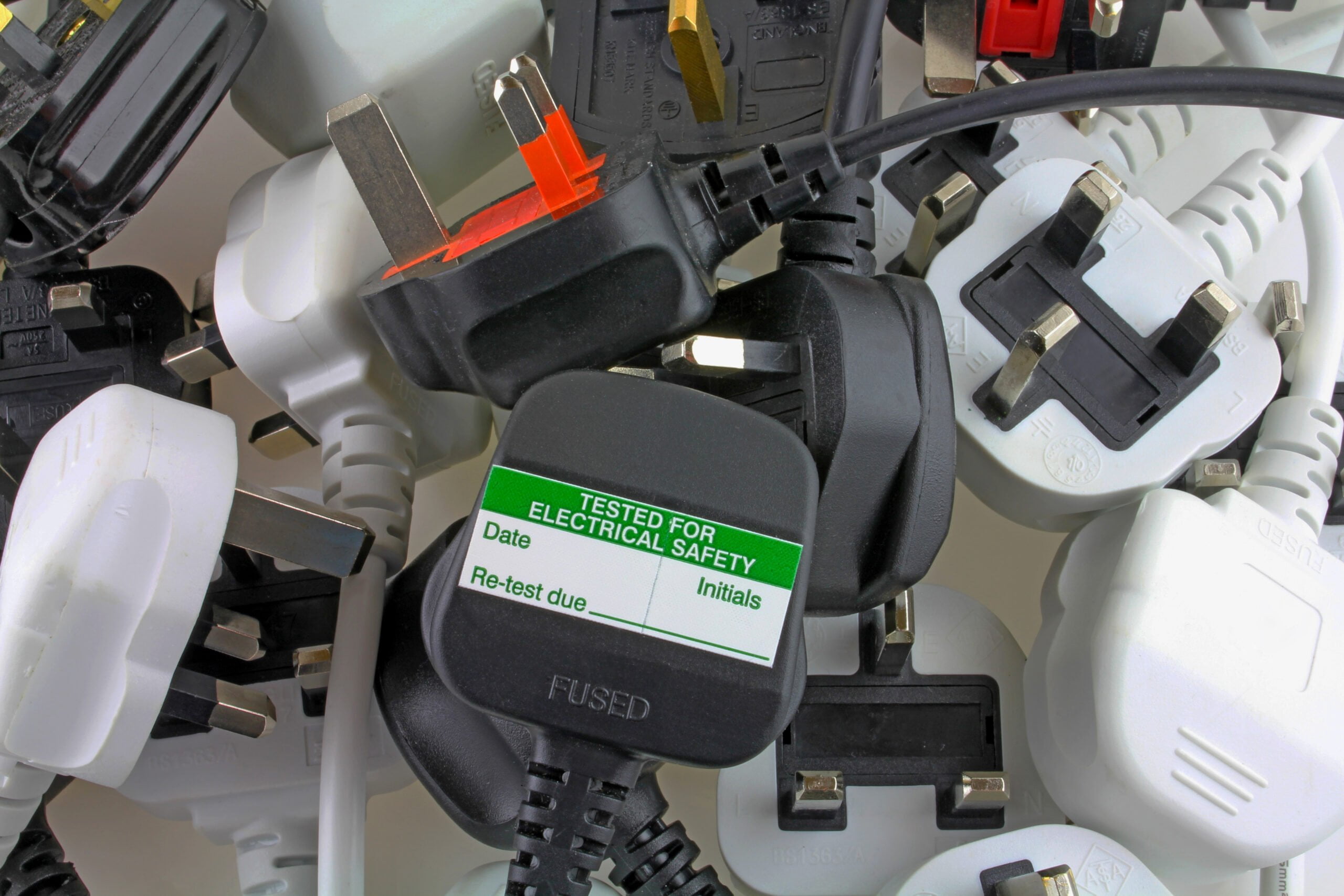
RyGroup have in house NICEIC Approved local electricians ready 24/7 to assist you with any electrical needs.
In need of a portable appliance test? We are there to provide highly skilled and trusted technicians with over 10 Years experience. You can see some of our excellent customer reviews below or why not give us a call to discuss your electrical requirements.
How Are PAT bookings handled? Portable Appliance Testing bookings are dependent on the number of items being tested, as this will impact the labour time required. For more information see our prices page here.
Following the completion of the testing, a report will be written up and the certificate will be issued accordingly via email!
Are you a Landlord or Business?
Ry has a dedicated Account Customer Team, who provide support, maintenance packages and discounted rates for Landlords & Agents. Why not take a lookAbout This Work
Average cost
£75-110+VAT
Average Time
45 mins - 1.5 hours
We Complete


 nicely after. I received mini training, plenty of advice and even help with bleeding my radiator. Would definitely recommend to anyone. 5*
nicely after. I received mini training, plenty of advice and even help with bleeding my radiator. Would definitely recommend to anyone. 5*How It Works
Call Us
Or book online
TRANSPARENT PRICING
SECURE YOUR DATE & TIME
CONFIRMATION
COMMUNICATION
GET YOUR SOLUTION
PAYMENT & FEEDBACK
Once a job is complete, on each visit you will receive your invoice on the same day. With your engineers' feedback. We would have already secured a payment method upon booking maybe by card with our tokenization secure system, or cash or even finance! You will have the chance to make payment via an online link and change your payment card - if not we will take the payment from the card you secured the booking with to save you the hassle.
FUTURE WORK & HISTORY
- 0
- 1
- 2
- 3
- 4
Frequently Asked Questions
Any appliances you provide to tenants, staff or customers when in your building or care - based on them fitting into the below categories should be P.A.T Tested
Electrical appliances are mainly categorised as Class 1, 2 or 3, with Class 1 being the most dangerous and Class 3 the least dangerous.
The class of an appliance helps determine whether it needs to be PAT tested and to what degree. Class 1 appliances need a full PAT test, Class 2 appliances need a PAT insulation test, and Class 3 appliances don’t need to be PAT tested at all.
Class 1 appliances
This type of electrical equipment has only basic insulation and relies on an earth for protection.
Class 2 appliances
This type of electrical equipment has extra insulation and so doesn’t rely on an earth for protection, which makes it safer.
Class 3 appliances
Class 3 appliances are low voltage items and are the safest class of electrical appliance. Their charging leads may need to be PAT tested.
Examples of Class 1 appliances:
Class 1 appliances carry this symbol:

The following appliances are usually (but not always) electrical class 1:

Examples of Class 2 appliances:
Class 2 appliances carry this symbol:

The following appliances are usually (but not always) electrical class 2:
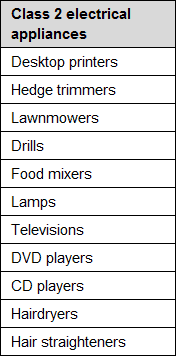
Examples of Class 3 appliances:
Class 3 appliances carry this symbol:

The following appliances are electrical class 3:
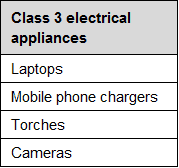
What are the ‘categories'
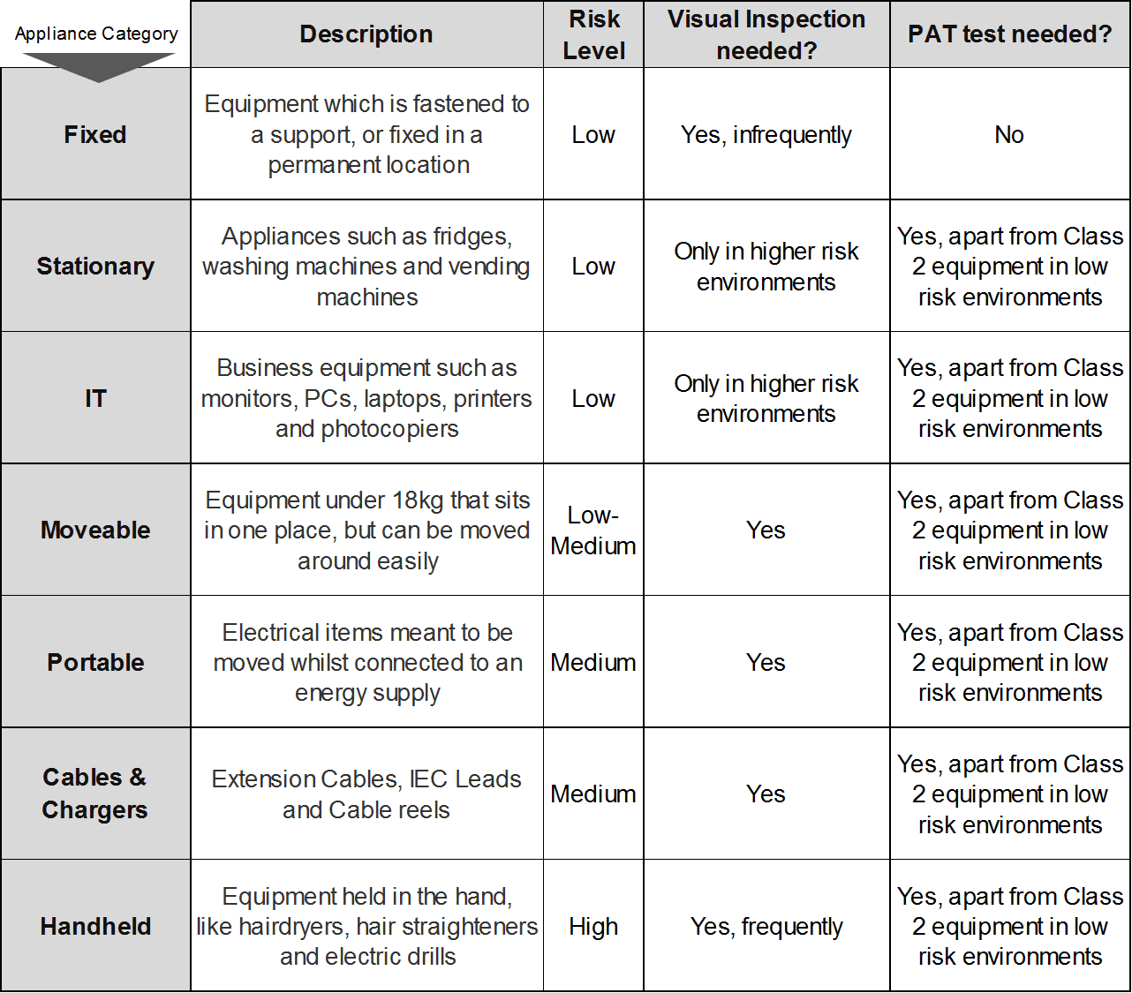
How often should items be PAT tested?
There are no specific rules for the frequency of PAT tests. However, the regulations say that the level of precaution taken should be ‘appropriate’ to the risk.
There are 3 main criteria that determine PAT testing frequency:
– the risk level of the working environment
– the electrical class of the appliance
– the category of the appliance
The Health and Safety Executive also recommends taking the following into consideration as necessary:
– manufacturer’s recommendations
– the age of the equipment
– frequency of use
– foreseeable misuse of the equipment
– effects of any modifications or repairs
– the history of the item
Our tables below tell you the recommended frequency of PAT testing and visual inspections based on the 3 main criteria.
Low Risk Environments:
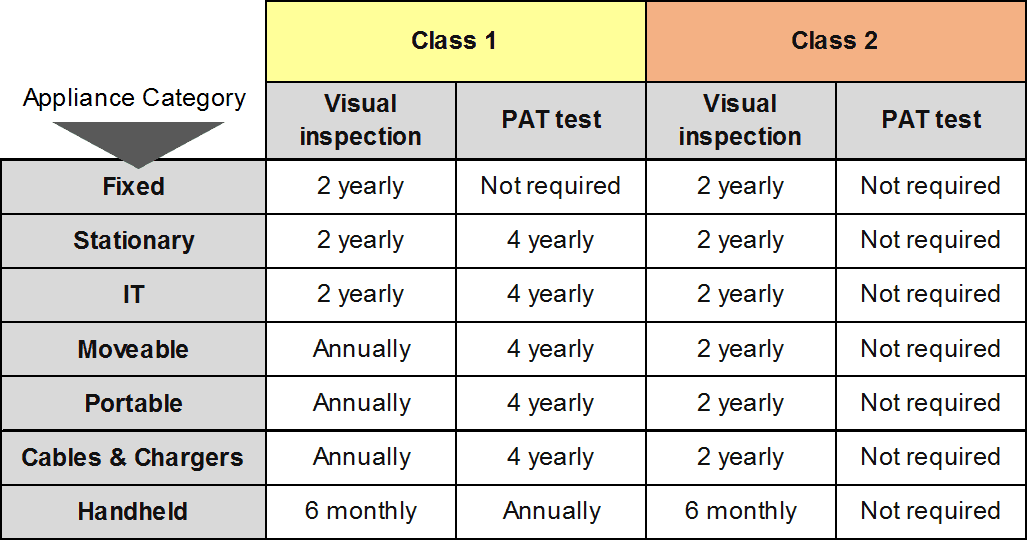
Low-Medium Risk Environments:
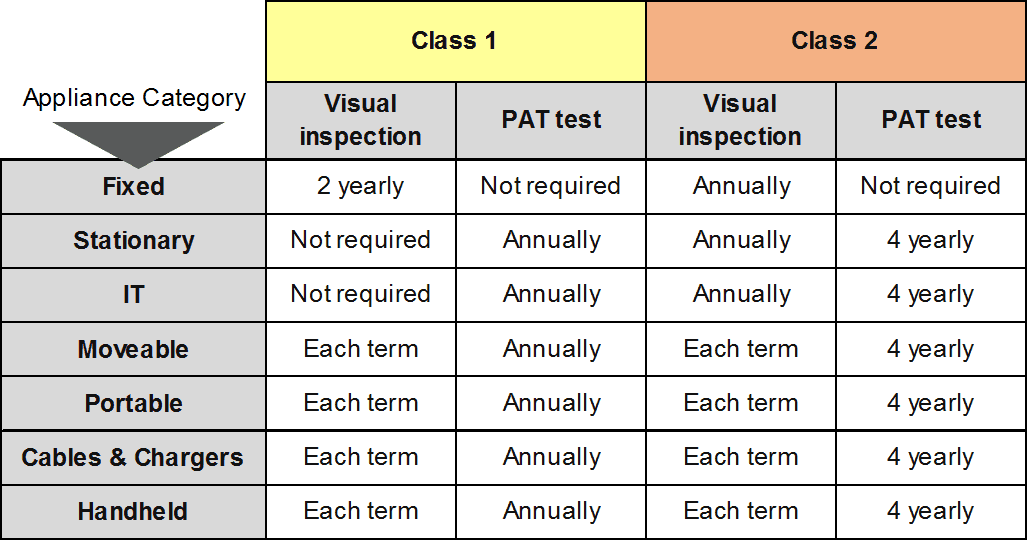
Medium Risk Environments:
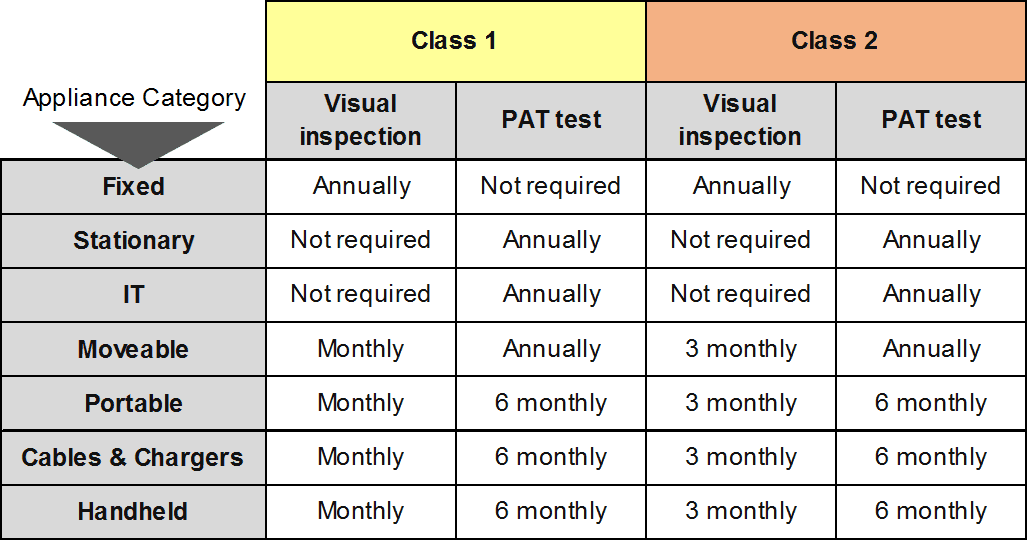
High Risk Environments:
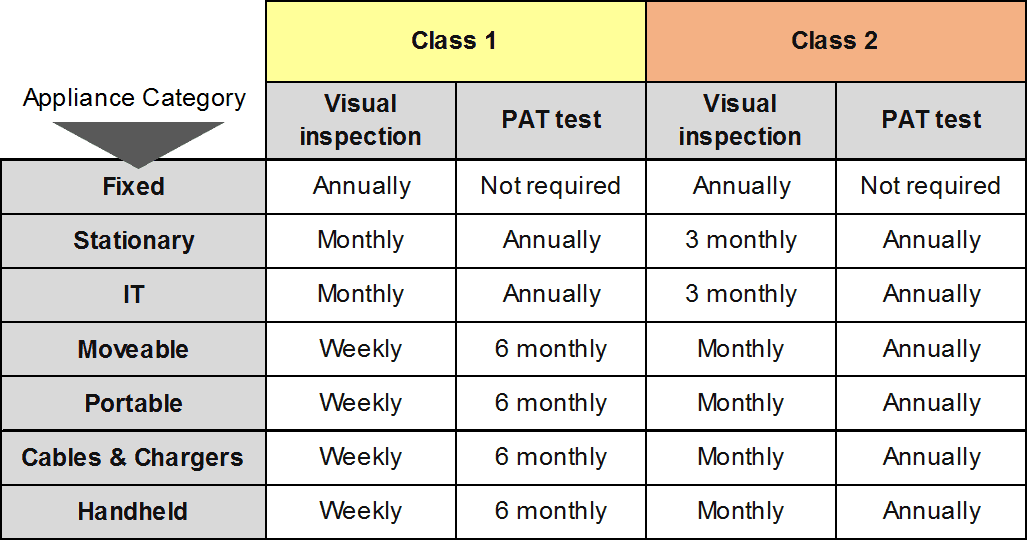
Extremely High Risk Environments:

How do I know if my business is high, medium or low risk?
There are 3 main factors that are taken into account when assessing the electrical risk of a business for PAT testing:
- The risk level of the environment
- The type of equipment being used
- Who will be interacting with the equipment
For example, in an office setting where equipment is relatively static and there is a regular team using it day to day, there is much less risk than on a construction site.
On a construction site, hand-held, potentially dangerous equipment is in regular use and groups of workers tend to switch in and out and therefore the risk is much higher.
The table below gives an idea of the likely risk level of different types of business:
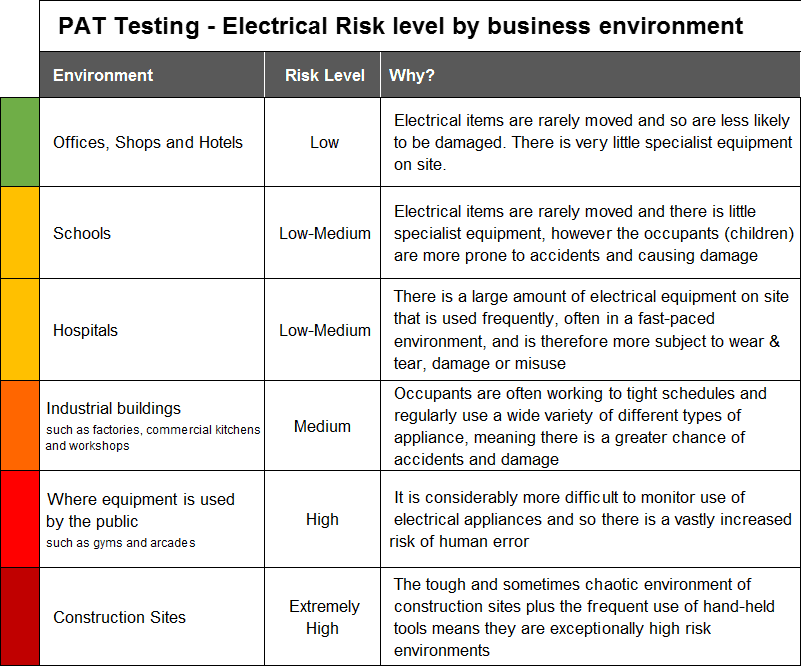

10% off an EICR
Meet One Of Our Electrical Engineers
Meet Mark - Mark is our Electrical QS who has had over 25 Years experience as a qualified electrician on both Domestic and Commercial works. Mark has had previous lead engineer and managerial roles .... and is a 10/10 on communication
Tell us an interesting fact about you..
Well I'm not sure how interesting it is ... but i live on a house boat which is pretty unique.How do you like your cuppa?
Hot & wet .. other than that I'm not fussedWhat do you love most about your job?
Hot & wet .. other than that I'm not fussed